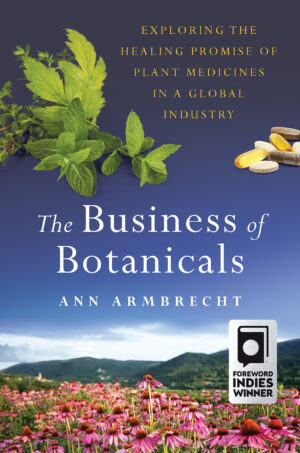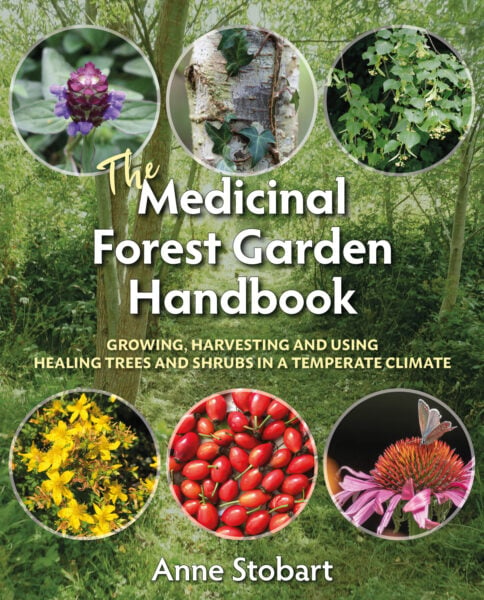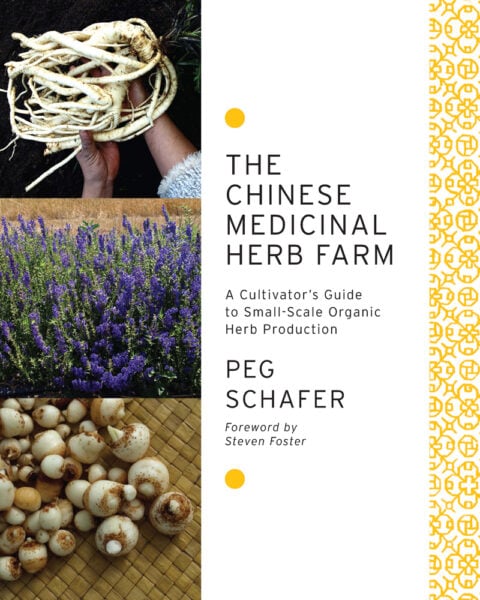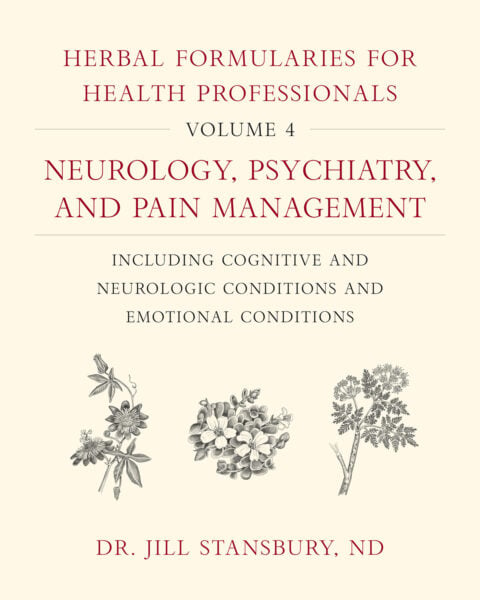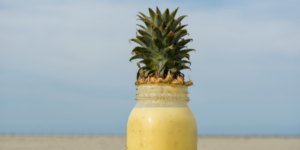Want to Become an Herbalist? Drawbacks of the Herbal Renaissance
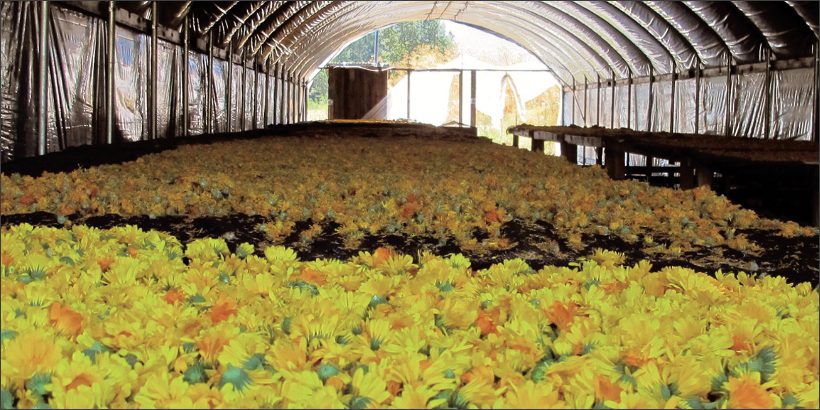
From tulsi to turmeric, echinacea to elderberry, medicinal herbs are big business—but do they deliver on their healing promise—to those who consume them, those who provide them, and the natural world? If you’re interested in become an herbalist, check out this insight to get started.
The following is an excerpt from The Business of Botanicals by Ann Armbrecht. The excerpt was originally published on Literary Hub. It has been adapted for the web.
(Drying organic calendula at Oshala Farm, a thirty-acre organic medicinal herb farm in Applegate Valley, Oregon. All photography courtesy of Ann Armbretch unless otherwise noted.)
The food industry understands that quality is cultural and is learned.
It is no longer only blemishes and bruises on fruits and vegetables that customers reject. There is now specialized branding for niche commodities like coffee and chocolate, salt and cheese—where it is clear that you get what you pay for in terms of taste and care, and possibly in terms of ethical practices, sustainability, and nutritional value. As Josef Brinckmann of Traditional Medicinals told me when we interviewed him for Numen, “There’s a difference between a microbrewery’s India Pale Ale and a bottle of Budweiser. There’s a difference between a Snickers bar and a Swiss chocolate bar. And it’s really the same with herbs. You can get the Snickers bar or the Bud or you can get the microbrew or the Swiss chocolate bar or anything in between.” (Josef is considered one of the foremost thinkers and leaders on sustainability and the botanical supply chain. I didn’t know it at the time, but this was to be the first of many conversations he and I would have over the next thirteen years.)
Quality standards in the dietary supplement industry are regulated under the Dietary Supplement Health and Education Act of 1994 (DSHEA). The act officially defines dietary supplements, which include herbs as well as vitamins and minerals. Under DSHEA and in particular under the Good Manufacturing Practices that were subsequently implemented by the FDA over ten years later, quality is defined in specific steps to ensure the “identity, purity, strength, and composition” of each ingredient and product.
More rigorous and detailed quality standards are found in recognized pharmacopeias, like the United States Pharmacopeia (USP), the American Herbal Pharmacopoeia, European Pharmacopoeia, and others. Though companies can choose to source only pharmacopeial grade plants, herbal products that are not formally approved as botanical drugs do not need to meet the requirements listed in the USP. These products are regulated as a food category, rather than as drugs. This is the primary reason why there is such variation in quality produced by different companies. More on this below.
Discerning quality with herbal products is more complex than it perhaps seems and has to do with more than regulatory frameworks. For example, I can tell the difference between a good and a bad apple, a field-ripened tomato and one that was grown out of season. But when I first started working with medicinal herbs, the signs that indicated good quality weren’t obvious to me. It was self-evident that dried herbs that are still vibrant green are better quality than dried herbs that are brown and lifeless. Beyond that, I had to learn what to look for and how to interpret what I saw.
Quality also includes correct identification. That seems obvious but it isn’t.
When I was a beginning herb student, any two jars of dried herbs looked exactly alike to me, like green pieces of dried leaves. And there was no way I could discern by taste or appearance whether a liquid extract made with a combination of herbs actually included all the plants listed on the label or some others entirely. Nor could I tell whether something potentially harmful was present, such as pathogenic microbes, pesticide residues, arsenic, or lead. Or whether the plants had been harvested at the correct time and handled in the ways that are known to retain the constituents.

Left: A certified organic storage facility at Runo, Poland. Certified raw materials (organic, FairWild) must be kept in a separate warehouse with a document trail tracing the plants to the source.
Right: A wholesale distributor of medicinal plants in Bangalore, India. An example of bad handling practices.
What’s needed is knowledgeable buyers making sure they are sourcing high-quality raw material. Yet that knowledge about herbs and identification was lost in the US, Steven Foster said. Unlike countries such as Europe, India, China, and Russia—almost every other country where the tradition of using plants as medicine didn’t fade—in America the complex grading systems for discerning quality in manufacturing botanical medicine were lost when the Eclectics died out. Without this deeper understanding of how to identify high-quality raw material, buyers have had nothing to go on but price. And so in the 1970s and ’80s, the US quickly became known as the price-buying market.
Many European phytomedicine and other botanical companies are at least one hundred years old. Two, three, and four generations of family members are involved, and knowledge about sourcing and processing of medicinal plants is passed through the generations. In the US the leading companies weren’t even established until the late 1960s. And the founders of those companies had no strong tradition to turn to for guidance. When botanical medicines died out in the early 1900s in the United States, the traditional networks of trade and manufacturing fell away. The scientific field of pharmacognosy began to die out as well. Plant knowledge was integral to the curriculum in US pharmacy schools from the late 1800s to the 1930s when herbs were part of mainstream care. But by around the 1970s and 1980s, pharmacy schools began dropping medicinal plant study from their curricula and eventually closed their pharmacognosy departments, often subsuming the subject under medicinal chemistry. The USP and the National Formulary dropped most monographs of crude drugs, including echinacea, black cohosh, and other mainstays of botanical medicine, between 1930 and 1950.1 (Many of these have been or are in the process of being readmitted.)2 In contrast, European and Australian pharmacopeias continued to list one hundred crude drugs and required companies to follow these pharmacopeial standards. This was not required in the 1950s in the United States. Pharmacists stopped preparing plant medicines, and so they no longer needed the tools to determine the identity and quality of crude drugs purchased from botanical supply houses.
Plant medicines “fell away not because they had been shown to be ineffective,” Steven Dentali wrote in a 2010 journal article. “They just fell out of fashion.”3
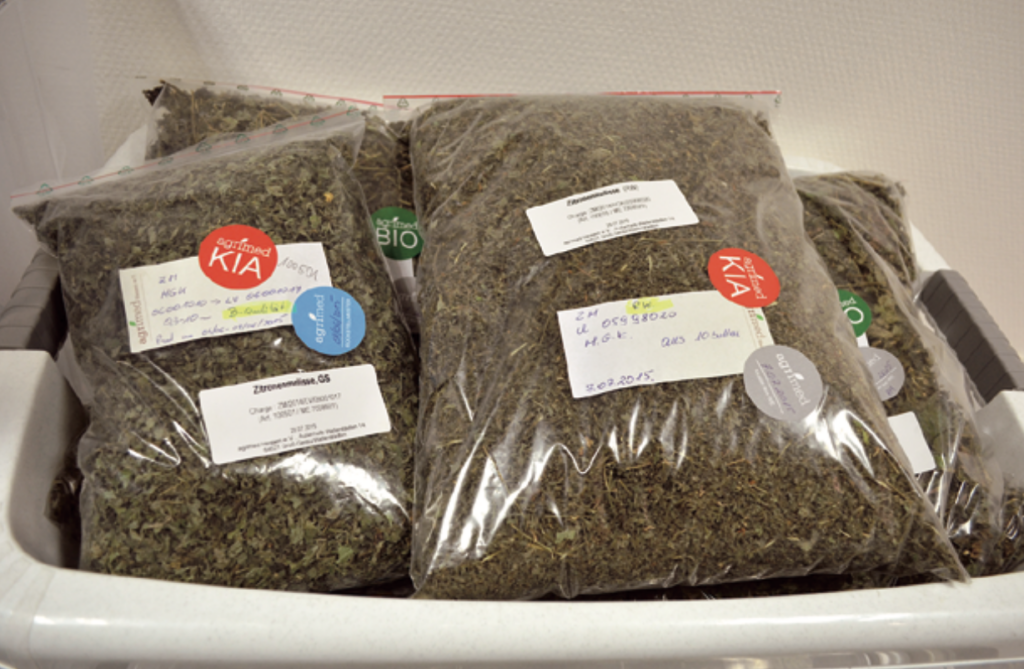
Processing companies send samples to finished-product companies to ensure that the herbs have been prepared to a company’s specifications. Photo courtesy of Willow Fortunoff.
As the focus of pharmacognosy shifted from the containers (plants) to their contents (chemicals), the “smeckers and leckers” (smellers and tasters)—those who could identify plants organoleptically (with their sense organs) and who knew common adulterants and bad-quality herbs—gave way to the “grinders and finders” who were looking for active compounds to be used to formulate new drugs. “Smellers and tasters” evaluated the plant as a “cultural message,” Steven Dentali wrote, and were replaced by those operating under the model of drug discovery.4
Though much of the back-to-the-land movement focused on folk remedies and kitchen medicine you could prepare with common weeds, it also helped create a renewed interest in information about plants and botanical identification.
Even so, in the early days, the herbal renaissance in the United States lacked the scientific rigor found in the European phytopharmaceutical industry or clinical herb programs. Steven Dentali guessed that few herbalists had the technical knowledge needed to productively read a scientific journal, just as few scientists had heard of the medicinal uses of echinacea. Things had gotten so bad that by the late 1970s, noted pharmacognosist Norman Farnsworth had a stamp made that said, save the endangered species: pharmacognosy.
Without any knowledge about how to evaluate quality and maintain it through the supply chain, those who were sourcing herbs for herb companies tended to make decisions based on price alone. For US companies that weren’t purchasing pharmacopeial-grade herbs, there were no systems for ensuring the quality of the imported herbs. “Few people were testing or tasting. They were just buying,” Roy Upton told me. And they were simply ordering plants from a list of names and prices printed on a piece of paper. They were not, as in other countries with established systems of trade, examining samples and setting specifications or, better yet, visiting the sources. This led to many sorts of problems in the supply chain, not just for US companies and consumers, but for the international market sourcing raw materials from the US.5
Notes
- J. Dentali, “Successful Botanical Research Requires Botanical Expertise,” Clinical Pharmacology and Therapeutics 87, no. 2 (2010): 149.
- Josef Brinckmann, R. Marles, P. Schiff, H. Oketch-Rabah, G. Tirumalai, G. Giancaspro, and N. Sarma, “Quality Standards for Botanicals: The Legacy of USP’s 200 Years of Contributions,” HerbalGram 126 (2020): 50–65.
- Dentali, “Successful Botanical Research,” 149.
- Dentali, “Successful Botanical Research,” 149.
- Various examples that Steven Foster and Ed Smith shared with me indicated that collectors were accidentally or deliberately passing off the wrong species of plants as Echinacea purpurea, and that there’s evidence in the historical record this may have been going on for a long time.
Recommended Reads
Recent Articles
Garlic mustard: while known as “invasive,” this plant can be consumed in its entirety and has great nutritional value. Plus, the garlic-flavor is a perfect addition to any recipe that calls for mustard! The following are excerpts from Beyond the War on Invasive Species by Tao Orion and The Wild Wisdom of Weeds by Katrina…
Read MoreMany know the effects of catnip on our feline friends, but few realize that catnip has medicinal effects for humans. From stomach aches to reducing fevers, catnip is a versatile herb with many benefits. The next time you grow this plant for your cat you may end up taking a few cuttings for yourself! The…
Read MoreWhether you’re looking to replace your end-of-the-day cocktail, relax before bed, or want something new to add to your tea, this non-alcoholic mocktail syrup base will do the trick. Delicious and all-natural, take a sip of this nightcap mocktail and feel your troubles melt away. The following is an excerpt from Herbal Formularies for Health…
Read MoreSurprisingly, medicine can actually be delicious. This anti-inflammatory smoothie uses natural (and tasty!) ingredients to help reduce inflammation caused by any number of circumstances. The following is an excerpt from Herbal Formularies for Health Professionals, Volume 4 by Jill Stansbury. It has been adapted for the web. RECIPE: Ginger and Pineapple Anti-Inflammatory Smoothie This is an all-purpose…
Read MoreMake your own delicious, healthy, probiotic sauerkraut! Four easy steps are all you need to turn fresh garden veggies into a long-lasting, tangy, pungent condiment. The following excerpt is from The Art of Fermentation by Sandor Ellix Katz. It has been adapted for the web. 4 Simple Steps to Making Sauerkraut The English language does…
Read More

